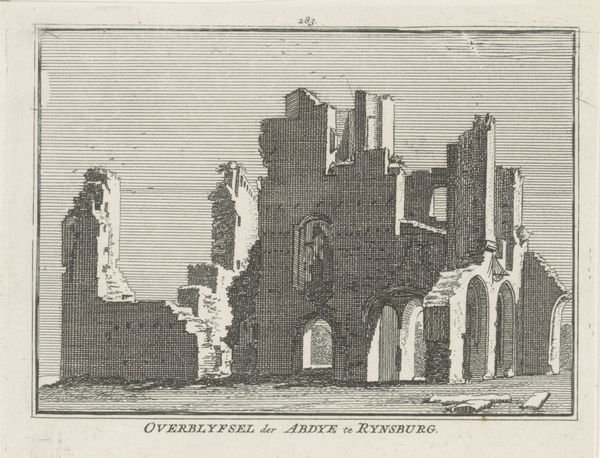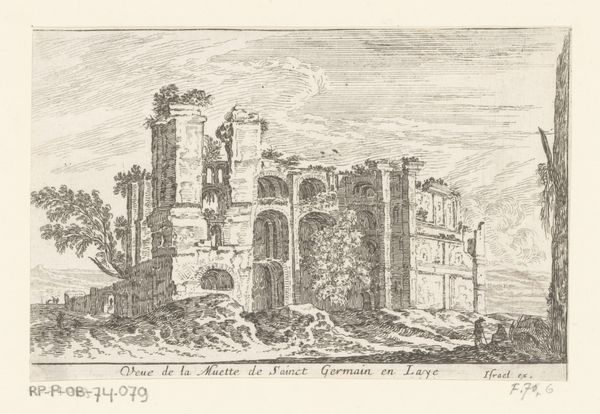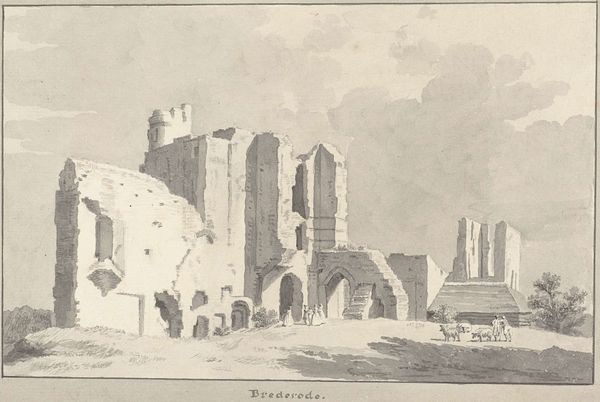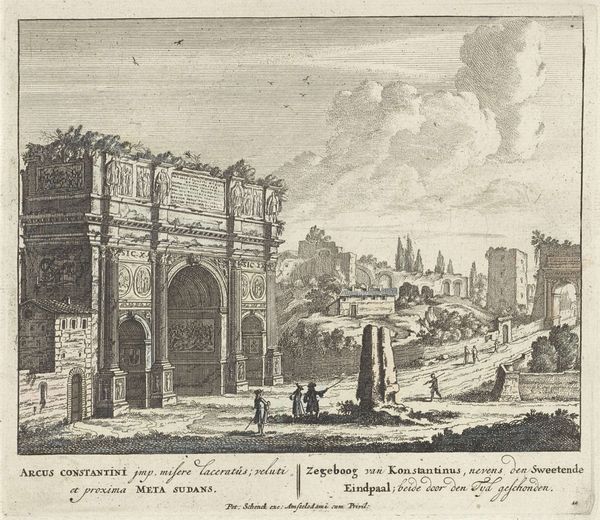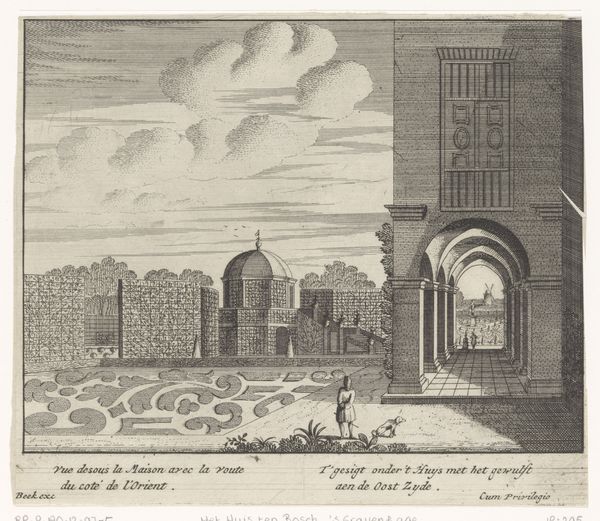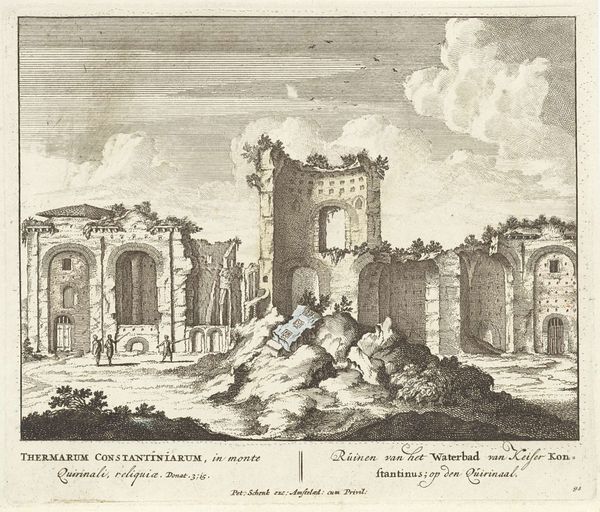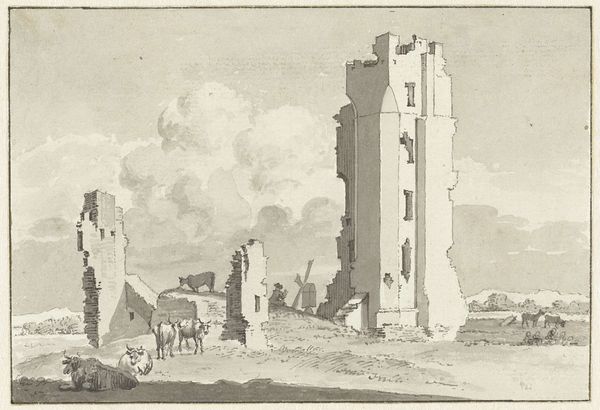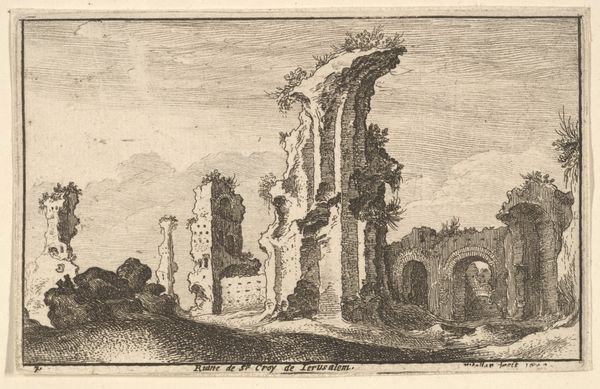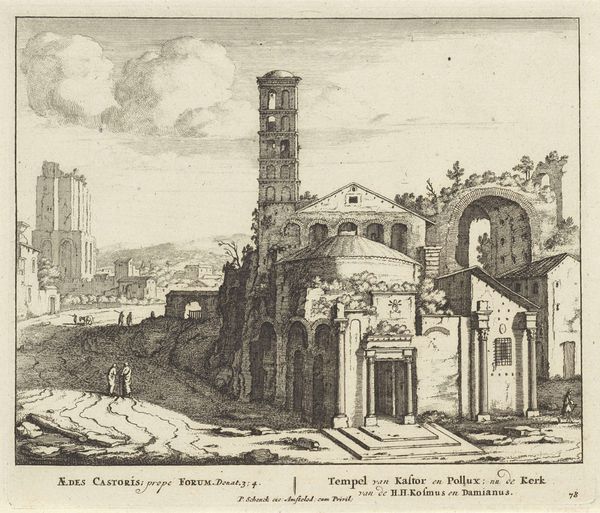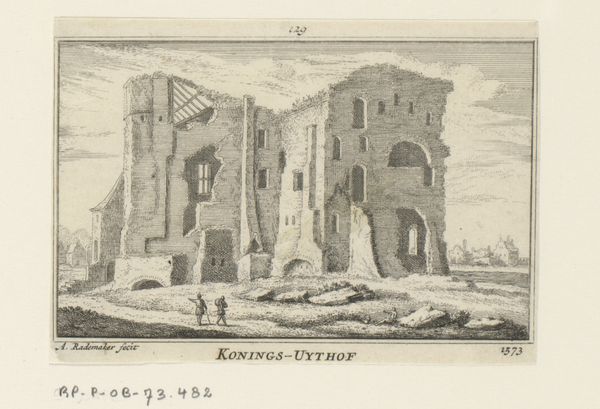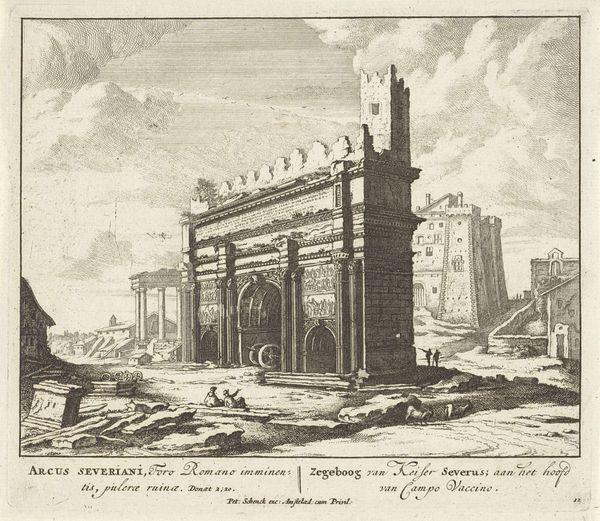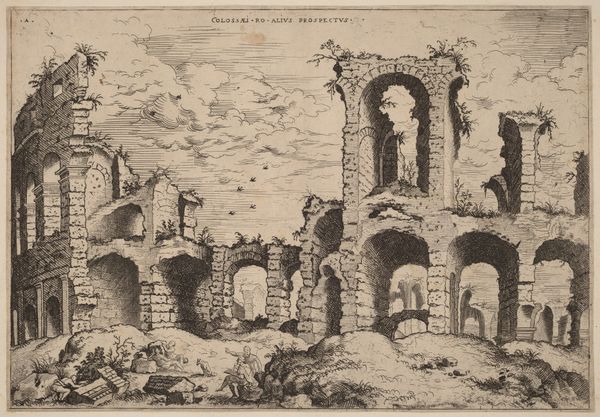
Dimensions: height 84 mm, width 110 mm
Copyright: Rijks Museum: Open Domain
Editor: Here we have Hendrik Spilman's "View of the Ruins of the Abbey at Rijnsburg," an etching dating from 1750 to 1792. The crumbling architecture definitely conveys a sense of time passing and the transience of human creations. What do you make of it? Curator: This piece speaks volumes about the materials used and how their interaction with time reflects broader social and economic shifts. Note the etching technique – it's a readily reproducible process, moving away from unique artworks for the elite. How do you think this shift in production might have affected its value or the artist's status? Editor: That's interesting! It's like mass production even back then. Did that make art more accessible or just…common? Curator: Exactly! Consider the ruins themselves. This isn't just a romantic depiction of decay, but the physical manifestation of historical events: perhaps Reformation, shifting political power, or even just the economics of maintaining large structures. The abbey's stones, its labor… now remnants in a landscape. Editor: So the process of *making* the print, using relatively common materials, mirrors the subject - a fallen structure open to the elements? Curator: Precisely! And look closely at the quality of the print. The artist uses different hatching and densities of line work, to suggest recession of architectural plane in space, but at its core it's reproducible labor that gives you access to space, and by extension a narrative. Do you think the architecture, and the people on this rendering, are staged? Editor: Hmmm…maybe? But all things said, now I see beyond just a pretty landscape. It's really a picture of production, isn't it, on all sides. Curator: Right. Examining the artist's tools, printing process, and subject reveals an intriguing interplay between artistic intent, labor, and socio-economic context. Always dig into the materiality of an artwork!
Comments
No comments
Be the first to comment and join the conversation on the ultimate creative platform.
